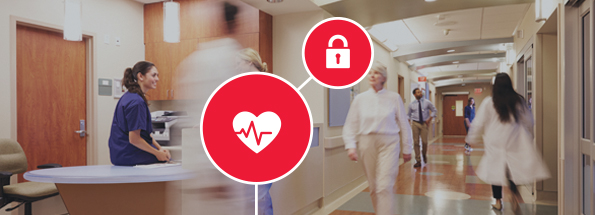How the Changing Face of Healthcare Impacts Security Risk

It seems that with every shift in society’s standards or expectations, healthcare changes in the wake. Some major developments have occurred recently, and continue to unfold, which affect various aspects of the fabric of our culture, including healthcare.
These changes cause a subsequent trickle down to the security of healthcare, marking a rise in security risks. When our healthcare environments (hospitals, most notably) tip toward being less secure, this translates to a core infrastructure of our well-being being at risk – something requiring immediate and serious attention.
The shifts at play include: growing populations, more violent crime, technology advances, and tighter government and corporate regulations. These changes, combined with lower (and more complex) insurance reimbursements, strain the corporate resources of our medical institutions. As resources stretch, security risks increase. Let’s take a closer look at some of the key changes and how security is impacted.
The Changing Face of Population
It’s an oversimplification to say population is growing. More specifically, there are two prominent populations needing more and more care: the aging Baby Boomers, and the Millennials who are all grown up, starting families, and expressing increased medical needs of their own.
It’s true Baby Boomers are aging seniors – and it’s also true there are many of them – 76.4 million in the US in 2015. One reason there are so many is they’re adept at tapping into the wonderful anti-aging products and technologies to keep them going year after year. This means more people are needing more care for longer.
The Millennials are an even bigger population than the Boomers, at 83.1 million in 2015. They are seeking medical care as they start families, and for mood disorders including anxiety and depression. About 28 percent of millennials are on medication of some kind, and of this group, 23 percent are taking antidepressants.[1]
As waiting rooms are crowded and beds are maxed, security needs also increase. More people need to be monitored for protection and for any possible breach in security. The numbers themselves create a stress point.
The Changing Face of Crime
Unfortunately, violent crime stats are heading in the wrong direction – increasing, in some cases, dramatically. Crime can land patients in medical facilities. Increasing violent crime also means more volatility in general, with healthcare workers being at the forefront of interacting with violent people. Healthcare workers are at least 4 times more likely to be injured at work than nearly any other type of worker[2]. This means healthcare security needs to be strategic at all stages – prediction, prevention, active and consistent management of the premises/systems, as well as response. Having an effective healthcare security system today can mean saving lives, more than ever before.
The Changing Face of Technology
Pairing the words ‘changing’ with ‘today’s world’ almost seems redundant. Integrating tech into healthcare is one aspect that requires flexibility. If the healthcare security system does not keep pace with the technology needs of the medical facility, operations or patients, the security system will end up being ineffective. Communicating with patients by mobile, tracking and verifying ID bands, protecting access to EMRs, systematizing entry into electronic door locks – these are all examples of how tech in healthcare impacts healthcare security and presents an ever-increasing risk scenario.
The Changing Face of Regulations
Regulations come in many shapes, sizes, and faces: from corporate, insurance, local, state and federal offices, regulations can squeeze and strain even the most effective and efficient healthcare organizations and their security systems. How reimbursements occur, who reports to whom, how patients may be signed in or out, or how their patient records can be tracked and stored – healthcare providers must be attentive to every dimension of regulation in order to be compliant and in many cases in order to be paid or funded. The impact on security is that consistent communication and training needs to happen across departments so that every team member can support compliance rather than add risk.
To learn more about the critical role of healthcare security and the impact of today’s changing world, check out our latest whitepaper, 3 Key Components of an Effective Healthcare Security Program, or contact a L&A healthcare risk management expert today. We are committed to doing everything possible to keep security tight and everything about our healthcare system safe.
[1] Bureau, US Census. “Millennials Outnumber Baby Boomers and Are Far More Diverse”. www.census.gov.
[2] Bureau of Labor Statistics